© 2024 M. José Sánchez
© 2024 Urantia Association of Spain
¶ NEW YEAR
New year, 2025, which comes with new plans in sight, goals, dreams of improving and growing. Haven’t we all thought during these holidays about aspects of our lives that we would like to leave behind with the year 2024? And at the same time, are there things that we have considered developing in the new year?
This moment of closure, of clearing our lives of certain cobwebs that we have accumulated over time and reluctance, almost inevitably invites us to create new horizons in our lives, because we do not like to leave voids, gaps, unfinished spaces in our lives. Something stirs inside us with the end of one year and the warm beginning of a new one. A question appears in our heads: what will 2025 bring us?
Those of us who read and want to put The Urantia Book into practice know that nothing really bad will happen to us, that everything will be for our good and growth, guided by a loving hand:
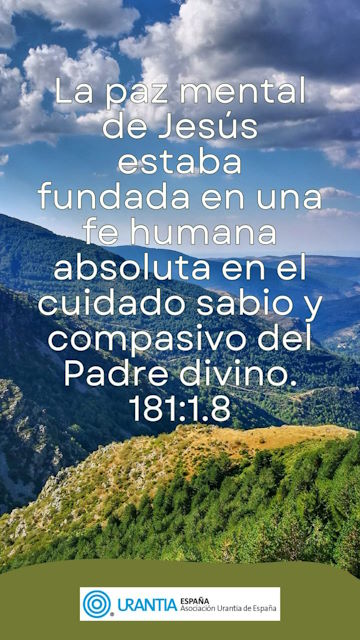
Jesus’ peace of mind was founded on an absolute human faith in the wise and compassionate care of the divine Father. Jesus had difficulties on earth, he has even been improperly called “man of sorrows”, but in all these experiences he had the consolation of a confidence that always gave him strength to continue forward with the purpose of his life in the full assurance that he was fulfilling the will of the Father. UB 181:1.8
This earthly experience of our beloved Master, that attitude with which he breathed and moved, invites us to reach a wonderful balance in our lives: neither becoming insensitive stoics hardened by pain, nor deluded and blind optimists.
We are talking about a vital strategy that empowers us and gives us magnificent strength to carry out our projects for 2025.
Precisely that way of living, with confidence, can be better visualized with a scene from a well-known movie. I am referring to one of the most famous situations from the movie “Indiana Jones and the Last Crusade” (1989), when the protagonist finds himself in front of a terrible precipice and only has an old book that tells him that he has to take a leap of faith to cross it. What happens when he finally does it? Do you remember?
https://www.youtube.com/watch?v=cjW6eLEv5-c
Indeed, as soon as you lift your foot and take a step, you touch firm ground where before there was nothing but an astonishing void. There is a path, a bridge perfectly blended with the surroundings.
I would like us all to be able to approach this new year with that attitude, with that leap of faith in a life that will be kind to us. We are not alone, we have never been. But how can we nurture that peace of mind, that confidence?
In this disconcerting and surprising 21st century in which we live, multiple psychological tools are at our disposal: deep breathing; fostering the ability to listen; respecting and appreciating differences; establishing healthy limits; managing our time according to our priorities; carrying out periods of digital disconnection; regular exercise, etc.
And we cannot forget what The Urantia Book highlights on so many occasions: prayer and worship, which are the source of our inner anchoring in the face of the ups and downs of life.
The prayer:
…he oftentimes carves wider and deeper channels through which the divine bestowals may flow to the hearts and souls of those who remember to maintain unbroken communion with their Maker… 194:3.20
About our Master he tells us what his secret of life was:
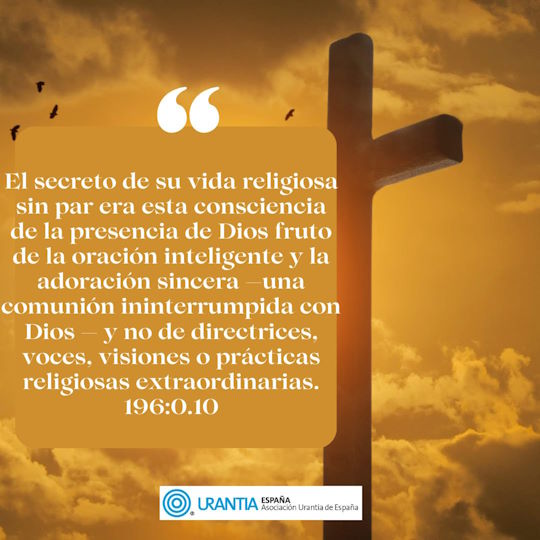
The secret of their peerless religious life was this consciousness of God’s presence resulting from intelligent prayer and sincere worship—unbroken communion with God—and not from directives, voices, visions, or extraordinary religious practices. 196:0.10
Therefore, inner work, dialogue with our Creator is the key. Something that Jesus of Nazareth, the man, did in his life, and that should inspire us who are also human beings. If the human Jesus managed to live a full life on Earth, in communion with the Father, we must and can follow him.
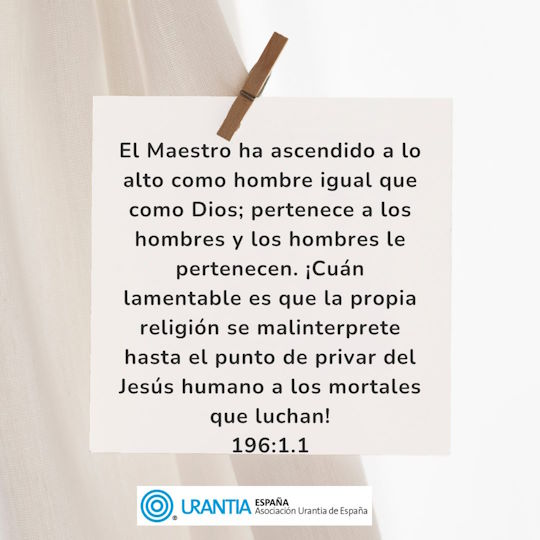
The Master has ascended on high as man as well as God; he belongs to men and men belong to him. How unfortunate that religion itself should be so misinterpreted as to deprive struggling mortals of the human Jesus! 196:1.1
We can follow the Master, now, in the 21st century, each one in his or her own specific life.
“Following Jesus” means personally sharing his religious faith and entering into the spirit of the Master’s life consecrated to the selfless service of men. UB 196:1.3
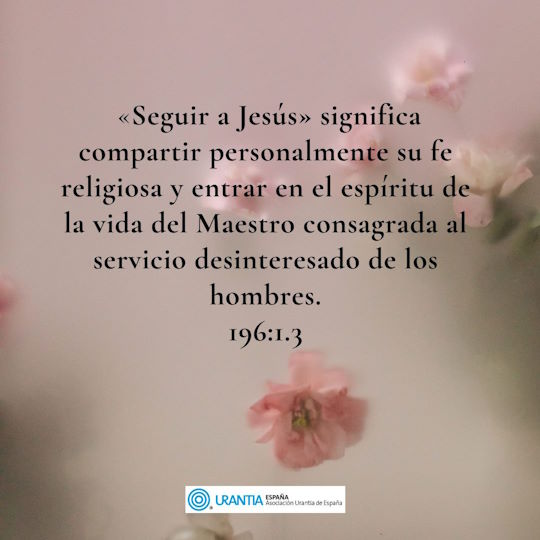
Will our minds open to that possibility this new year? Because there, in the mind, is the key.
For decades, science has scoffed at spirituality. But a group of Tibetan monks participated in a study that left neuroscientists speechless. Their brains revealed something no one expected.
In 2004, Richard Davidson set up a revolutionary experiment: 8 Tibetan monks, a laboratory and a question that would change everything. Among the monks was Matthieu Ricard, who would later be known as “the happiest man in the world.”
The plan of the experiment was simple: compare the brains of expert monks (more than 10,000 hours meditating) against 10 beginners. They connected electrodes to all the participants. They measured their brain activity at rest. Then, they asked them to meditate.
The results? They were astonishing. The Tibetan monks showed levels of gamma waves never before recorded in a human being. These waves, associated with attention, memory and well-being, increased as they progressed in their meditation practice.
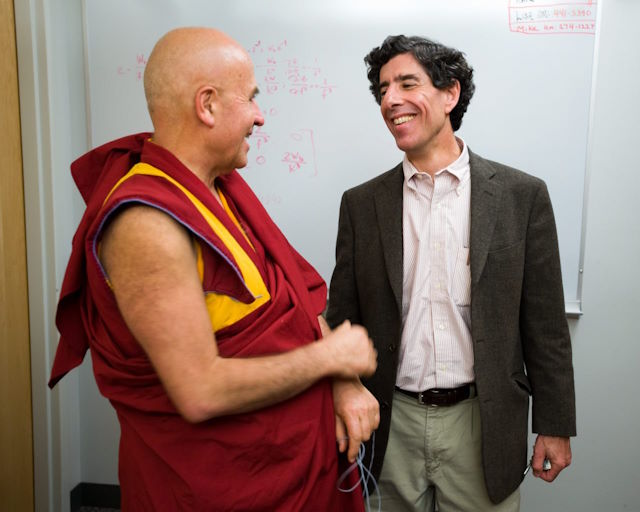
In addition, it was observed that the left prefrontal cortex (happiness zone) shone with a unique intensity. This suggested something revolutionary: Meditation not only calms our mind, but literally molds the brain to be happier. We are talking about the amazing neuroplasticity of the brain. The power to shape us was already evident.
But that wasn’t all. Even at rest, the monks’ brains showed superior patterns of mental coordination. Their brain rhythms appeared “synchronized,” indicating sustained emotional balance, even outside of meditation.
What about the inexperienced volunteers? After just one week of meditating, their brains were already showing improvements. This confirmed another key idea: meditation is like a muscle. You start small, but with practice you can achieve big results.
The impact of the study was gigantic: It changed the way we see well-being and happiness. It is not something fixed or unattainable. It is a skill that we can train every day, it is not something unattainable.
With this example of such a striking and proven scientific experiment, we see how other human beings are capable of living with greater peace of mind, with happiness. There are resources within our reach to achieve this. Achieving this is possible on this “decimal” planet, on this planet that crucified its own Creator, which is capable of monstrosities, but which is also capable of showing beauty, truth and goodness. Let us do everything possible to achieve this, following our Master:
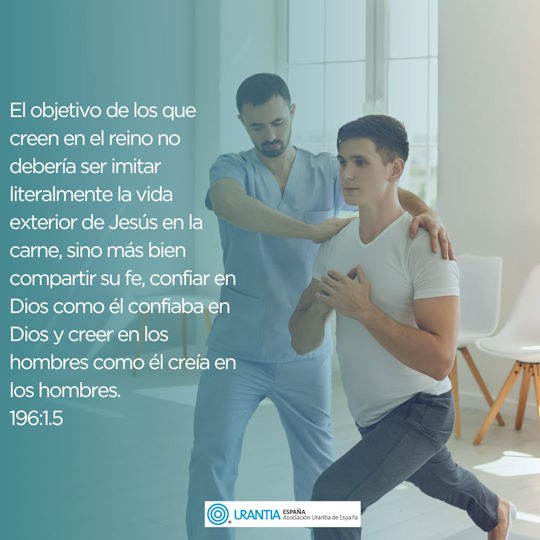
The aim of those who believe in the kingdom should not be to literally imitate the outward life of Jesus in the flesh but rather to share his faith, to trust in God as he trusted in God, and to believe in men as he believed in men. 196:1.5
In this world full of technology and where people feel increasingly alone, more stressed, less happy, less satisfied, the global, holistic, essential, spiritual approach of the human being gives us hope. This vision from above shows us that life is not an accident, that the human being is not just a piece of matter or a cold machine. Life is not reduced to algorithms, to reifying everything, but is beauty, wonder, spontaneity, full of interactions. For example: if we try to fully understand any small group of interactions within a cell, the complexity shoots up exponentially; any attempt to algorithmically represent these interactions led researchers at the Free University of Brussels to say that they were faced with a “horror graph”: everything is full of arrows to the point that nothing can be distinguished, because everything does everything in the cell.
The vision of life that Jesus of Nazareth had was wonderfully free, inviting us to be protagonists of our lives as children of God and to participate in the loving heartbeat of the world. Let us wake up from the drowsiness of the world of machines, to breathe and embrace Life. There are so many tools to achieve this…
Hopefully we will know how to focus on this vision in the new year that has just begun. Right there, within our reach, we have the example of our Master and his presence in our daily activities always accompanies us. As the Spanish poetess said:
Who art on earth, our Father,
I feel you in the pine needle,
on the blue torso of the worker,
in the girl who embroiders curved
the back, mixing the thread on the finger.
Our Father who art on earth,
in the groove,
in the mine,
in the port,
in the cinema,
in the wine,
at the doctor’s house.
Our Father who art on earth,
where you have your glory and your hell
and your limbo that is in the cafes
where the wealthy drink their soda.
Our Father who art in the school of free,
and at the greengrocer,
and in which he goes hungry
and in the poet, never in the usurer!
Our Father who art on earth,
on a bench in the Prado reading,
You are that Old Man who gives bread crumbs to the birds on the walk.
Our Father who art on earth,
in the cigarette, in the kiss,
in the spike, in the chest
of all who are good,
Father who lives everywhere,
God who penetrates any gap,
You who take away the anguish, who are on earth,
Our Father, we do see you
those of us who will see you later,
wherever, or there in heaven.
(Gloria Fuertes)
From this “Light and Life” newsletter we wish you:
- A happy start to the year
- Happy projects and changes in our minds
- Happy reading of this January Newsletter.
This is our gift.
¶ References
- Index of the magazine “Luz y Vida” of the Association of Spain
- This article from the magazine “Luz y Vida Online”